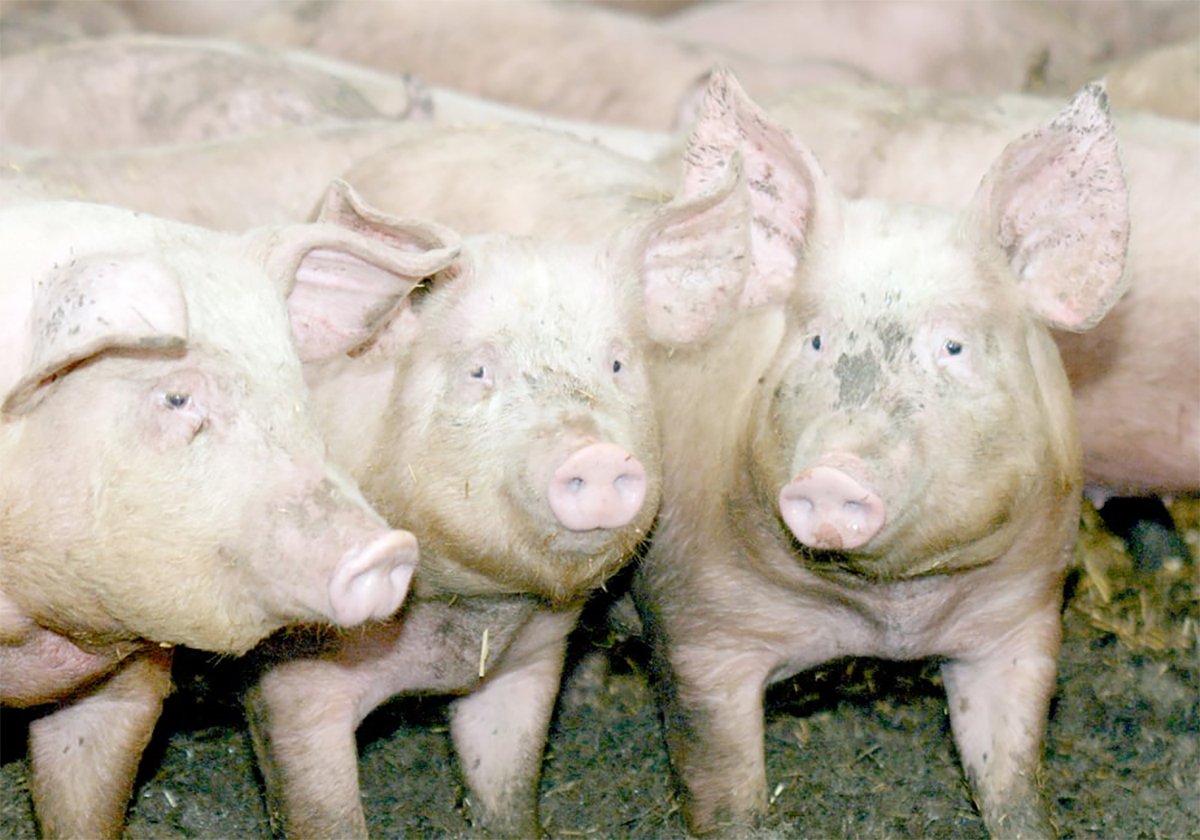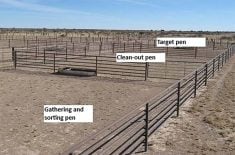Glacier FarmMedia – Feeding gilts extra lysine during late pregnancy significantly increases mammary gland development in first-time mothers, according to new research.
The benefit, said Agriculture Canada swine lactation biology researcher Chantal Farmer, could be more milk supporting larger litters and better hog growth for Canada’s pork producers.
“When you look at a peak lactation, on a per-kilogram body weight basis, the sow will produce more milk than a dairy cow … but then, she’s still not producing enough to get maximal growth for all their piglets,” Farmer said.
Read Also

The Western Producer Livestock Report – October 2, 2025
Western Producer Livestock Report for October 2, 2025. See U.S. & Canadian hog prices, Canadian bison & lamb market data and sale insight.
Swine milk production hasn’t kept up to the breeding priorities of the industry, which have encouraged bigger litters, Farmer said during a virtual symposium hosted by Agriculture Canada’s Sherbrooke Research and Development Centre earlier this summer.
Genetic selection has increased milk yield, she acknowledged, “but we’ve mainly put focus on litter sizes … so we saw milk increase, yes, but sow litter size increased even more. So, each individual piglet is actually getting less milk.”
There are other side effects that the litter size shift has brought to the sector. More piglets can mean more farrowing complications, the researcher said. Sows are in labour for longer and piglets have less time to consume colostrum, potentially compromising immunity.
Research published by the U.S. National Library of Medicine’s National Center for Biotechnology Information also suggests that larger litters come with lower average birth weights and greater variation in birth weights within litters.
Farmer’s research focused on mammary gland development during the last third of pregnancy, from days 85 to 90 of gestation. This is already a time when female pigs see quick growth in mammary tissue.
“A main factor that does limit milk yield is the number of milk synthesizing cells that are present,” she said.
“The more cells that the sow has that can synthesize milk, the greater her milking potential.”
Her study tested feeding gilts 40 per cent more lysine than current requirements during days 90 to 110 of gestation. That increased intake levels from 18.6 grams to 26 grams per day. The results were a 44 per cent increase in mammary parenchymal tissue, the tissue that produces milk.
“For a 40 per cent increase in lysine, that’s a one-to-one ration. That’s quite amazing,” Farmer said.
The lysine supplementation strategy only saw gains in first-time mothers. When Farmer tested the same approach on sows that had given birth before, there was no benefit.

The older sows already had 39 per cent more mammary tissue than gilts naturally, suggesting their mammary development had reached a plateau.
“You need to focus your attention on the replacement gilts. The replacement gilts make up a big proportion of the herd. They’re the future of the herd,” she said.
When Farmer tested seven lysine levels in gilts, optimal milk yield was achieved at 22.7 grams per day.
Her research tapped soybean meal rather than synthetic lysine to increase the gilts’ ration. This had the added benefit of increasing general protein levels, she added.
The research also supports the adoption of phase feeding, changing diets at specific production stages rather than feeding the same ration throughout pregnancy.
“So in gestation, in (the) first 90 days, it doesn’t really matter. But as of Day 90 of gestation, you should change the feeding or use some trap dressing to provide more lysine,” Farmer said.
The findings could help producers better prepare replacement gilts for lactation success, potentially improving piglet growth rates and overall herd productivity, she said.


















